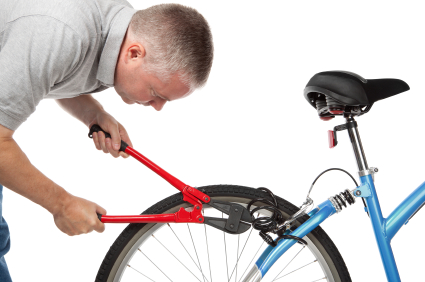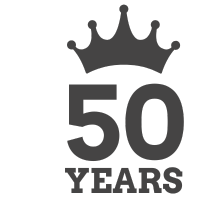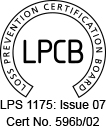Bike Security Advice
How to keep your bike secure
When buying a bike, budget for security. You will need one or more locks and somewhere secure at home to keep your bike. Make sure you don't buy a stolen bike. By buying a stolen bike you are helping to support the illegal trade in bikes, the next stolen bike to be bought could be yours!
By avoiding doing so you help make it less likely your bike will be stolen in the future. If you buy a bike from a legitimate seller, it is likely to be more reliable and you'll probably be covered if anything does go wrong with it. Do what you can to check it is from a legitimate outlet, and that they are sure it is not stolen.
If it seems suspiciously cheap, ask yourself why. You may be able to check the ownership of a bike you intend to purchase by searching a property register such as Immobilise, or asking for proof of purchase or ownership.
Take out adequate insurance, either by extending your home contents insurance or through a separate policy. Cycling organisations and bike shops may offer specialistcover. Do this at the time of purchasing the bike otherwise you may not get around to it.
Record and register your bike. Take a clear colour photograph of your bike and make a written record of its description, including any unique features, so that you can report it accurately if it is stolen, this will help prove it is yours if it is recovered by the police.
Register your bicycle model, make and frame number with a third party. (The frame number is often underneath the bottom bracket where the pedals attach, or on the frame under the seat.) Again this will help anyone who subsequently finds (or even buys) it to check whether it is stolen and return it to you. Some registration schemes allow you to register individual bike parts that have serial numbers.Contact your local police station for further advice.
If you add an additional security mark or tag to your bike, this will again make it easier to identify as yours. Sometimes your local police will provide this service for free. The mark may be obvious, which should help deter thieves; or hidden, such as ultraviolet; or there may be a combination of both. Clearly visible marks should be securely applied. A hidden mark or electronic tag is less likely to be identified and removed by thieves. Invest in a good quality bike storage system.
More than half of all bicycle thefts take place from an owner's property. So as well as taking care of your bike when you are out and about, you should think about how safe it is at home.

Some things you can do are:
- Keep your bike in a secure shed or garage and get into the habit of keeping the door locked. If you keep your bike in a shed, make sure you get a robust lock for the door.
- Secure it to an immovable object, or consider installing a floor or wall-mounted anchor lock for extra security.
- If you are going to keep your bike in a communal area, is there anything you can lock it to?
- Keep it out of public view.
- For additional protection, keep your bike locked wherever you leave it at home.
- A good quality bike storage unit will ensure your bike remains just that yours! A good quality locking system and an insurance approved unit is even better.
Out and about
- Avoid leaving your bike in dimly lit or isolated places.
- Leave your bike where a potential thief can be easily seen.
- Always lock your bicycle, even if you are just leaving it for a couple of minutes. Think about using two different types of lock, see advice on Locks on in our site
Finally
- Inform the police if you have your bike stolen; you can report the theft by phone or in person at your local police station. Ask for a crime reference number. This will help you trace the progress of your case and may be needed for your insurance claim. Find out about/take part in local cycling initiatives, to raise awareness of cycle security.
- Contact your local crime prevention officer, local authority,
- employer or the land owner about the installation of cycle parking where secure anchorages are insufficient or nonexistent.
- Don't create a market in which thieves can operate.
If no one bought stolen bikes there would be no reason to steal them.












